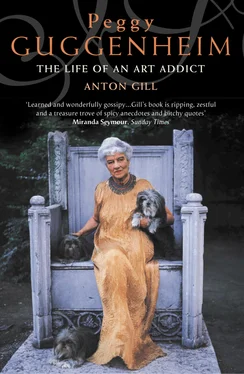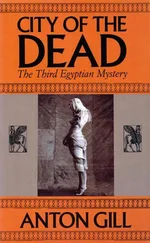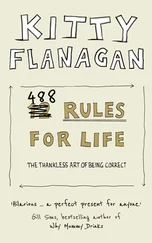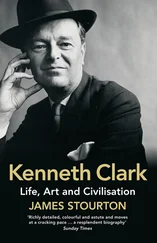As backdrop and inspiration to all the artistic activity that was going on, there was the city itself. The writer Malcolm Cowley has observed:
Prohibition, puritanism, philistinism and salesmanship: these seemed to be the triumphant causes in America. Whoever had won the war, young American writers came to regard themselves as a defeated nation. So they went to Paris, not as if they were being driven into exile, but as if they were seeking a spiritual home. Paris was freedom to dress as they pleased, talk and write as they pleased, and make love without worrying about the neighbours. Paris was a continual excitation of the senses.
And if you were lucky enough to be working for an American publication as a correspondent and were paid in dollars, all the better.
How close to all of this were Peggy and Laurence? Given that they were caught in an unsatisfactory marriage and expecting their first child, it is understandable that they had little time to immerse themselves fully in the cultural life of the time; but there seems to have been no profound connection at all, other than through parties and jaunts through the bars and bistros of the Quartier Latin. They were generous hosts – though Peggy secretly resented the amount of money spent on entertaining – and the guests came largely because of the prospect of free food and drink.
Although Laurence’s slim output of work shows the influence of the Surrealists, he was never seriously involved with them, and Peggy had yet to show any hint of the interest in modern art that was to define her life later. She had as yet no conscious sense of purpose. If Laurence told her, as she attests he did in order to humiliate her, that ‘I was fortunate to be accepted in Bohemia and that, since all I had to offer was my money, I should lend it to the brilliant people I met and whom I was allowed to frequent,’ his remark at least planted another seed – but it took time to grow.
The Vails’ money set them apart, but they did not hold salons like Stein or Barney, nor did they patronise the arts. They lived in the grand Hôtel Lutétia, far from the Left Bank. Peggy did make friends within the artistic community, and might have become more involved with that world earlier in her life had it not been, paradoxically, for the presence of her husband, who partly facilitated and partly inhibited her entrance to it. She had not forgotten the lessons and the principles instilled in her by her teacher Lucile Kohn, but she was handicapped by her lack of confidence, something which Laurence was at pains to undermine anyway, on account of his own sense of inadequacy and inferiority, which stemmed from a similar source to Peggy’s: parental neglect.
That they saw themselves as doyens of artistic life, however – Laurence more so than Peggy – is clear from contemporary observations of them during the 1920s. The contradictions in Laurence’s character – charm and intelligence struggling with petulant egotism – are noticeable too. Matthew Josephson remembered that
A few Byronic figures loomed among us; they owned private incomes and showed no great urge or haste to fill many volumes with their written words. Laurence Vail was such a one, who wrote and also painted a little, but more often and more seriously seemed bent on painting the Left Bank of the River Seine red … With his long mane of yellow hair always uncovered, his red or pink shirts, his trousers of blue sailcloth, he made an eye-filling figure in the quarter. Moreover he was young, handsome, and for all his wild talk, a prince of a fellow; whenever he came riding in, usually with a flock of charming women in his train, he would set all the cafés of Montparnasse agog.
Laurence literally ‘knew everyone’; and even if he didn’t, would buy him a drink. His vivacious sister, Clotilde, who resembled Laurence in appearance as in high spirits, would usually be one of his café-crawling party, a band of Dionysiacs gathering followers at one bar or another.
Marriage to Peggy curtailed Laurence’s freedom; she knew it, she was jealous of his company, and yet felt unable to satisfy him. So they took it out on one another. They were caught in a vicious circle which it would take a long time yet to break. Meanwhile, their incompatibility invaded every part of their lives. Laurence says that he tried to teach Peggy about the things which interested him, but as she had a perfectly biddable mind and profited happily from the education of other male companions, his allegation that ‘she knew nothing when I met her and doesn’t know much now’ is more a reflection of the failure of their relationship than of her. The sharpness of his tongue didn’t help. He was particularly unsparing about Florette. Once, flirting with his mother-in-law at dinner, he tickled her playfully. ‘Shush,’ she is reputed to have replied, ‘Peggy will see, Peggy will see, Peggy will see.’ Florette’s mannerism of repeating things threefold is exploited in Murder! Murder!:
Without waiting for outside encouragement the door caves in. Is it the mistral? The police? No, it is Flurry, my mother-in-law, paying an informal morning call.
‘What’s this about murder, ’bout murder, murder …’
Agitatedly, Flurry proceeds to make herself at home. Having flung one of her two extra cloaks on a chair, she places the other one on the bed. Then, having removed the cloak she wears, she puts on the lighter of the two extra cloaks. Then, having found the lighter one too light …
And so on in a similar vein. Shortly afterwards, Laurence goes on to mock Florette’s meanness, and writes of her ‘large, flabby face … All the woes of Israel seem to be assembled on her dark face.’
After a visit late in the year from Peggy’s sister Hazel, who was already divorced from her first husband and about to marry number two, a London-based American journalist called Milton Waldman, the Vails took a house on the Riviera for the winter of 1922–23, where Peggy became ill and spent her time re-reading Dostoevsky. The fighting continued. Peggy was always able to use her money as a stick to beat Laurence with; indeed it was her only defence, and whenever he wanted to be generous with her money (since he had relatively little of his own) it gave her a perverse pleasure to frustrate him. This time it was over a loan of $200 to their friend the writer and art critic Robert Coates, to enable him to return to the United States.
Peggy was well aware of the power her money gave her, and she used it throughout her life, often cruelly, to bolster her low self-esteem and to help her stand up to the sexism which many of her men displayed. Often generous in important matters, she was nearly always – but by no means consistently – mean in the little things. This was a trait acquired from her forebears, which she could no more help than the shape of her nose or her weak ankles. But at this period she might have felt a sense of justification. It was she who paid for most of their expenses. Now she purchased a second-hand Gaubron from ‘one of my cousins in the automobile business’. The car wasn’t up to much, but they hired a chauffeur and Laurence learned to drive, which immediately caused him to fall in love with fast cars. They returned to Paris in the New Year, exchanged the Gaubron for a new Lorraine-Dietrich, one of the most expensive marques available, and welcomed Peggy’s older sister, who had come over from the States to be with her for the birth of her child, now only two months away. Benita was horrified at Peggy’s manner of living.
In the following month, April, the family crossed the Channel to London. It had been decided that the baby, who had been given the provisional nickname ‘Gawd’, should be born outside France to avoid the later risk of French national service should it turn out to be a boy. Peggy and Fira Benenson found a house to rent in Holland Park, while Benita and her husband Edward, joined by Florette, took rooms at the Ritz Hotel in Piccadilly. Florette had been kept in ignorance of the pregnancy until now, to minimise the chance of her making too much of a fuss over the imminent arrival of her first grandchild.
Читать дальше












